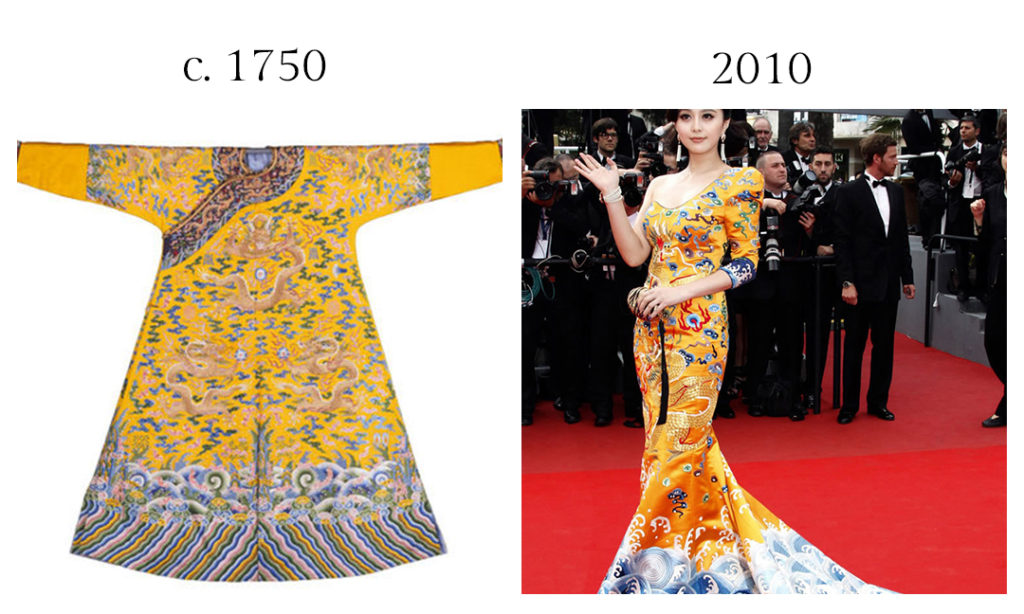
Dragon Robe
China’s Qing Dynasty would mandate several sumptuary laws, establishing yellow as the dedicated color for the dragon throne: its emperor and court officials. Emperors of the Qing Dynasty would dress in elaborately embroidered golden robes commonly known as Dragon Robes; silk robes which featured horse-hoofed sleeves, an asymmetrical collar, and
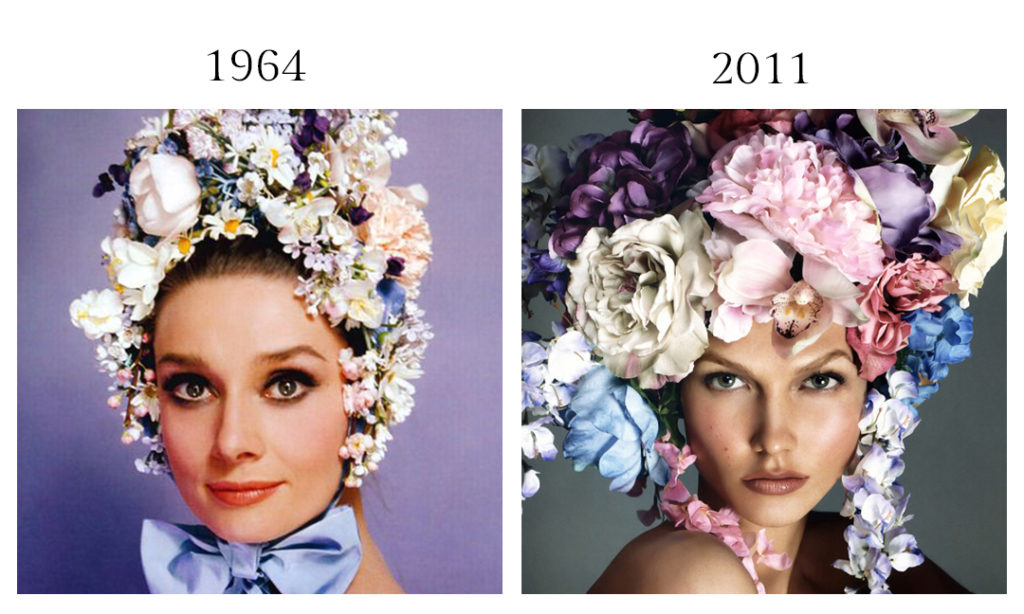
Coming up Roses
Abundant with images of the era’s leading ladies in both Hollywood and high society, Cecil Beaton’s oeuvre contains several of Hepburn’s most famous images. A year after the couple’s paths crossed in the musical My Fair Lady–Beaton would serve as both Costume Designer and photographer, aiding in the creation of the
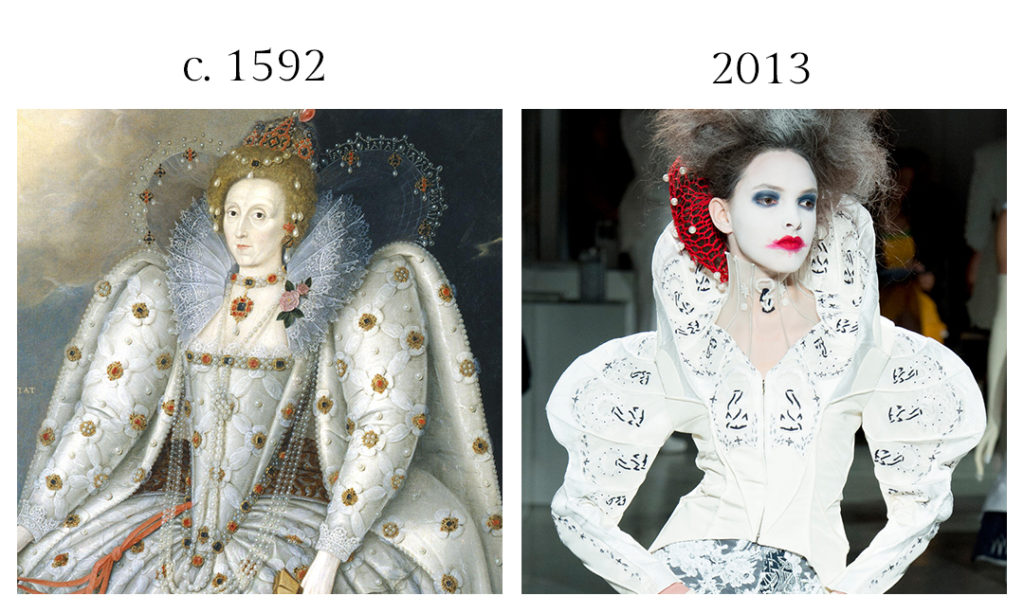
Ruff Idea
As the uni-sex ruff became an increasingly pervasive component of Renaissance dress, women made an alteration to the demure neckpiece creating the open ruff as an alternative that showcased the woman’s bust. For Thom Browne’s SS 2014 collection, the designer would reappropriate several elements of historic costume including the women’s open ruff. Queen Elizabeth
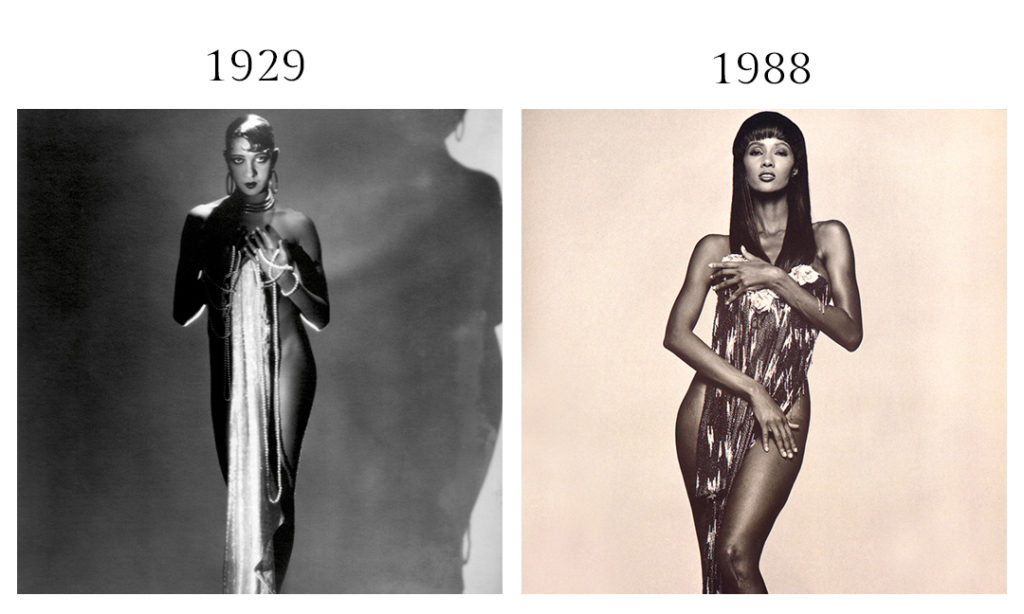
Baker’s Dozen
A pioneer for African American women, Josephine Baker is commonly associated with her seductive banana dance performance at the Folies Bergère, costumed in a skimpy skirt constructed with a string of artificial bananas. When racial prejudice proved to hinder to her career, Baker moved East; first, to New York and then Paris,
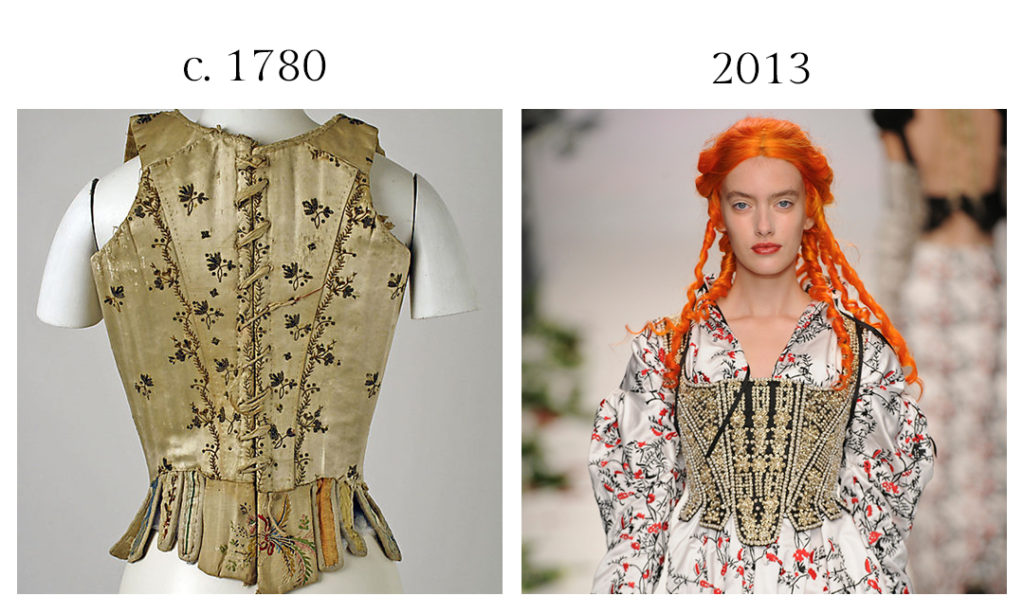
Stay Put
A “stay” was the word of choice for the understructure later referred to as a corset in the 19th-century. Today, the corset conjures up notions of tight-laced, wasp-waisted hourglass figures, however, the stay of the 18th-century was intended to lift the breasts and straighten the back rather than nip in
